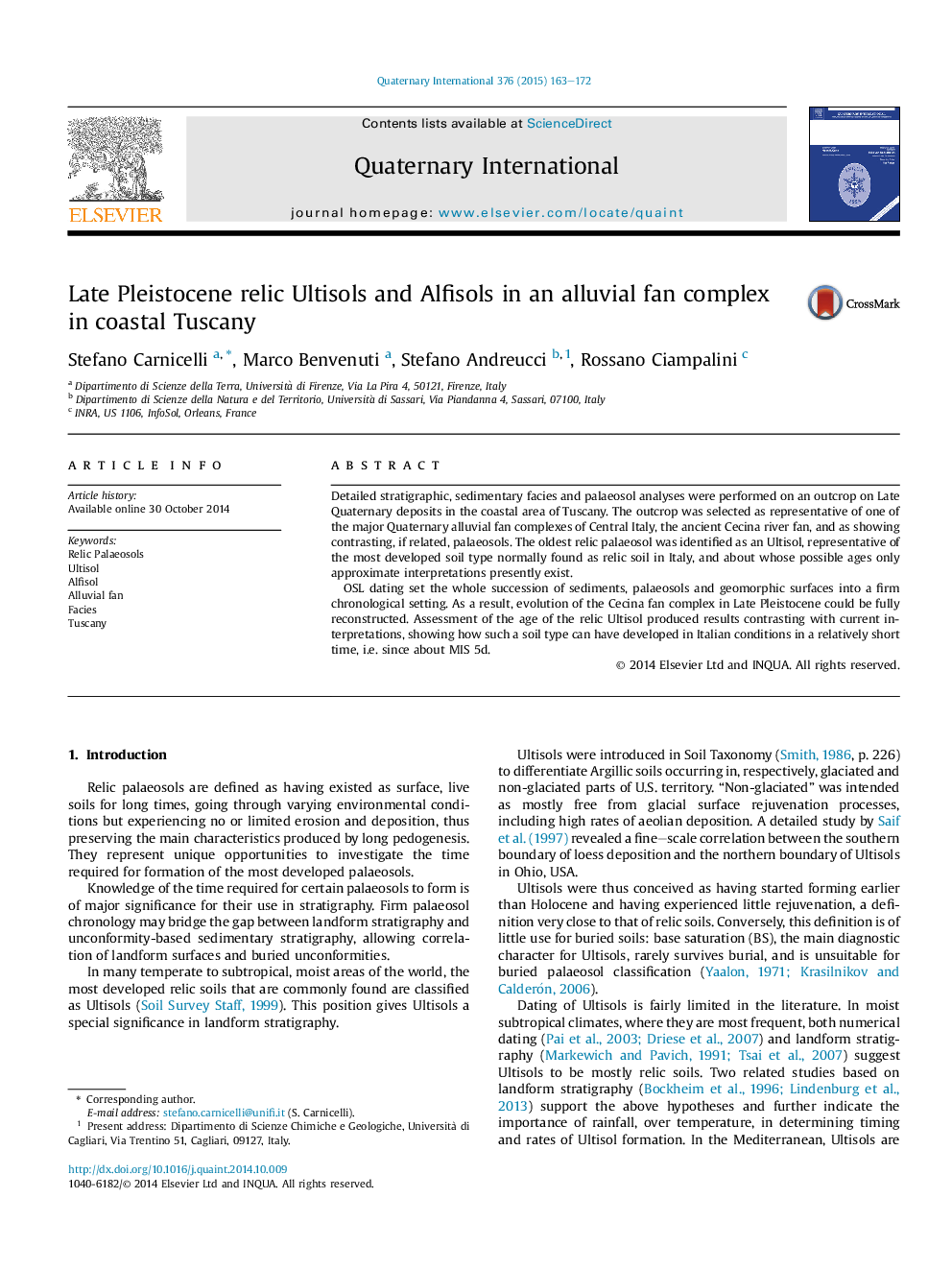| Article ID | Journal | Published Year | Pages | File Type |
|---|---|---|---|---|
| 1040674 | Quaternary International | 2015 | 10 Pages |
Detailed stratigraphic, sedimentary facies and palaeosol analyses were performed on an outcrop on Late Quaternary deposits in the coastal area of Tuscany. The outcrop was selected as representative of one of the major Quaternary alluvial fan complexes of Central Italy, the ancient Cecina river fan, and as showing contrasting, if related, palaeosols. The oldest relic palaeosol was identified as an Ultisol, representative of the most developed soil type normally found as relic soil in Italy, and about whose possible ages only approximate interpretations presently exist.OSL dating set the whole succession of sediments, palaeosols and geomorphic surfaces into a firm chronological setting. As a result, evolution of the Cecina fan complex in Late Pleistocene could be fully reconstructed. Assessment of the age of the relic Ultisol produced results contrasting with current interpretations, showing how such a soil type can have developed in Italian conditions in a relatively short time, i.e. since about MIS 5d.
